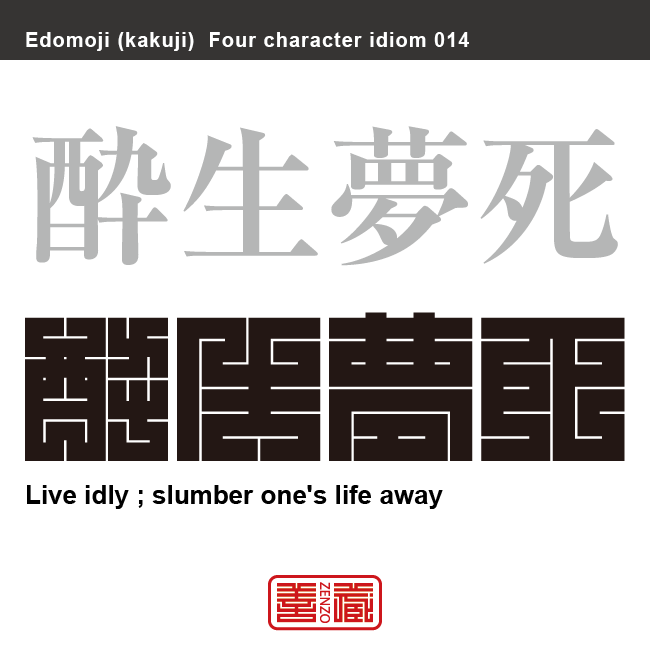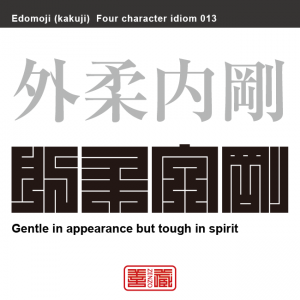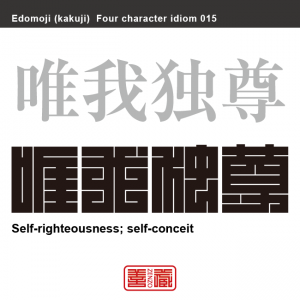酔生夢死 すいせい-むし 角字でことわざ、四字熟語

酔生夢死
すいせい-むし
何もせずに、遊んでばかりいて、無駄に生きること。
酒に酔ったような夢み心地で、ぼんやりと一生を終わること。
元は中国の儒学者「程顥」(ていこう)の残した書物『程子語録』(ていしごろく)より
雖高才明智
膠於見聞
酔生夢死
不自覚也
「どれだけ才智があろうと、目の前の雑事にとらわれているものは、無駄に生きていることに無自覚のままである」が語源であり、酔生夢死の部分が独立した。
「酔生」酔っ払って生きる
「夢死」夢に死ぬ
Unicode: 酔[U+9154] 生[U+751F] 夢[U+5922] 死[U+6B7B]
角字とは?
江戸時代に誕生した角字は、正方形のグリッド内にほぼ水平・垂直のラインのみで文字(漢字)が表現されるグラフィックアートです。
正方形という限られた空間の中に、あらゆる文字を閉じ込めようとするグラフィックデザインは、前述した、ミニマムな物に対する日本人特有のこだわりが随所に感じられます。
そのシンプルで有りながら、奥深い「角字」は多くの日本人を魅了し、お祭りで着る半被や印半纏(しるしばんてん)と言われる着物や、商標、印鑑、家紋、看板デザインなどに今日まで数多く使用されてきました。
What is Kakuji?
There is a style of penmanship called “Kakuji” in Japan. Edo-born Kakuji is a graphicart that expresses letters (kanji) with almost horizontal and vertical lines only.
The design which bases on many straight lines seems simple, or too plain even at its first glance; yet this beautiful artistic penmanship that encompasses the aesthetic of the Japanese in the Edo era, also known as “Iki”, and playfulness has long been inherited to this day, thanks to the masteries’ long years of efforts in training and refinement.
Kakuji with its simplicity and depth is used for designs such as trademark, hanko stamp, family crest and signboard.































































 2文字コード:MZ 3文字コード:MOZ 数字:508 ITU:258 ccTLD:.mz
2文字コード:MZ 3文字コード:MOZ 数字:508 ITU:258 ccTLD:.mz







































































































































